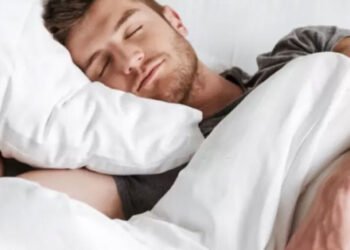Hair relaxers are chemical products used to straighten curly or wavy hair by breaking down the hair’s protein structure. While they offer a way to achieve smooth, straight hair, they can also cause significant damage. Potential harm includes hair breakage, scalp irritation, hair thinning, and long-term weakening of hair strands.
Recognizing signs of damage, such as increased hair loss, brittleness, and scalp discomfort, is crucial for maintaining healthy hair. Early detection allows for timely intervention, such as reducing the use of relaxers, incorporating nourishing treatments, and seeking professional advice to prevent further damage and promote hair health.
Increased hair breakage
Hair relaxers damage the hair structure by breaking the disulphide bonds in the keratin of the hair, thereby changing its natural curl pattern. This chemical process makes hair more brittle and fragile. It is weakened because its protein build-up gets compromised, reducing its flexibility and hardiness.
To identify breakage, one can look out for short broken pieces of hair that often are found in sinks or on pillows. However, unlike normal shedding where whole strands with root bulbs are lost, breakage results in shorter uneven parts that have no bulbs.
Some indications of breakage include split ends, easily snapping hairs when pulled and generally a decrease in volume as well as length retention. To mitigate these impacts, proper hair care and minimizing chemical treatments are important.
Dry and brittle hair
Hair relaxers take away moisture from hair by breaking down the cuticle – a protective outer covering therefore making it difficult for hair to retain water. As a result, it becomes dry and brittle hence highly prone to damages.
The chemicals in relaxers remove natural oils and weaken hair’s ability to absorb and hold onto moisture. To restore moisture and prevent further damage, use deep conditioning treatments regularly and incorporate hydrating shampoos and conditioners. Limit the use of heat styling tools and opt for air drying whenever possible.
Moisturize by using leave-in conditioners, natural oils such as olive oil or coconut oil. Additionally reduce usage of chemicals and consult professionals who give personalized advice concerning your hair care routines.
Scalp irritation and burning
There are scalp irritations and burns caused by some relaxers, which manifest themselves through redness, itching sensations, stinging as well as burning feelings that persist while applying or after application of relaxer products.
Blisters, sores and peeling skin can be other symptoms. Rinsing thoroughly with cool water to remove any leftover chemicals is one way to calm an irritated scalp Apply aloe vera gel or natural oils such as coconut and olive oil for calming the scalp and moisturizing it. No further chemical treatments or heat styling should occur until the scalp heals completely.
Seek immediate assistance from a dermatologist or health care provider if you notice signs that your condition is worsening such as swollen, severe pain or infected areas, they will provide you with treatments directed towards the problem area and how to prevent future damage.
Thinning hair
Thinning hair due to excessive use of hair relaxers occurs as they repeatedly break down the protein structure of hair weakening its strands leading them to become brittle and prone to breakage. The continuous exposure of chemicals can also cause irritation on our scalps therefore damaged follicles might result in hair loss. It is important to make sure that enough time is given between these treatments for healing. During this time, hair regains its strength, elasticity and moisture content.
At least 8-10 weeks should lapse before applying a relaxer again. It is important during this period to concentrate on nourishing aspects like deep conditioning treatment, protein masks which strengthen your hair. In this way you prevent your hair from accumulating damage which in turn makes your locks silkier and healthier throughout their lifetime.
Hair loss
Hair loss is one of the effects that the use of relaxers can cause. In fact, in some cases the situation can worsen and cause significant thinness or bald areas.
These critical situations arise when the chemicals contained in relaxers weaken the hair shaft and cause damage to the scalp, inflaming the follicles and harming hair growth. It is imperative that you know how to identify these problems to reverse them as soon as possible.
If you detect hair loss, it is most recommended that you stop using straighteners and immediately consult a professional doctor in the area of dermatology. The specialist will likely tell you to use sulfate-free hair products and adopt a diet rich in minerals and vitamins.
Changes in hair texture
Relaxers permanently alter the natural texture of hair by breaking the disulfide bonds in the hair’s keratin, transforming curly or wavy hair into straight strands. This chemical change may disrupt the uniform texture making handling of the hair a little bit harder.
The hair can become lifeless, puffed up, or inclined to matting and splitting. In this case, add moisture and strengtheners to your hair care regimen. These could include moisturizing conditioners as well as protein treatments.
In order for you to reduce more damage, do not use any heat styling methods. Do not allow it to break when combing your hair by use of wide-tooth combs and gentle detangling methods. Trimming often keeps split ends in check and promotes good health for your strands. Moreover, switching over to natural styles that embrace the changed texture of the hair whilst promoting overall hair health is essential.
Understanding product liability and defective hair relaxers
Using faulty relaxers on one’s tresses significantly escalates risk levels of burns that are caused by different chemicals such as severe scars, permanent loss of strands and hypersensitivity reactions.
Substandard items can contain dangerous levels of toxins or even be wrongly formulated thereby exaggerating these chances. Customers who suffer from damaged products need to understand product liability so that they would know their rights and seek compensation accordingly.
Knowing your rights as a consumer will help guarantee safe usage procedures along with holding accountable those manufacturers who are responsible for producing defective products. For more information on the risks associated with defective hair relaxers and understanding product liability, you can read this article. Educating yourself about these risks and legal aspects can help you make informed decisions and take appropriate action if you encounter defective hair care products.
Conclusion
One of the mechanisms to protect your hair from the damage that relaxers can cause is to recognize and detect signs of deterioration. Among these signs or symptoms, the most relevant are dryness, breakage, thinness, dullness, scalp irritation, and the most obvious is hair loss.
Acting in a timely manner is essential to rescue your hair. Reduce the application of chemical treatments, and use products with nutrients. This will help you keep your hair healthy and shiny.












